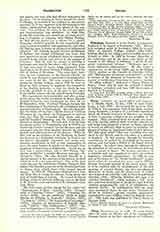

Ulloa, ANTONIO DE, naval officer and scientist, b. at Seville, Spain, January 12, 1716; d. near Cadiz, Spain, July 5, 1795. He entered the navy in 1733. In 1735 he was appointed with Jorge Juan, another young Spaniard, a member of a scientific expedition which the French Academy of Sciences was sending to Peru to measure a degree of the meridian at the equator. They remained there for nearly ten years. In 1745, having finished their scientific labors, he and Jorge Juan prepared to return to Spain, agreeing to travel on different ships in order to minimize the danger of losing the important fruits of their labors. The ship upon which Ulloa was travelling was captured by the British, and he was taken as a prisoner to England. In that country, through his scientific attainments, he gained the friendship of the men of science, and was made a Fellow of the Royal Society of London. In a short time, through the influence of the president of this society, he was released and was able to return to Spain. He became prominent as a scientist and was appointed to serve on various important scientific commissions. In 1766 he was sent as Governor to “La Florida Occidental” (Louisiana), where he remained two years, and in 1779 he became lieutenant-general of the naval forces. He is to be credited with the establishment of the first museum of natural history, the first metallurgical laboratory in Spain, and the observatory of Cadiz. As a result of his scientific work in Peru, he published (Madrid, 1784) “Relation historica del viaje a la America Meridional”, which contains a full, accurate, and clear description of the greater part of South America geographically, and of its inhabitants and natural history. In collaboration with the Jorge Juan mentioned above, he also wrote “Noticias secretas de America“, giving valuable information regarding the early religious orders in Spanish America. This work was published by David Barry in London, 1826.
VENTURA FUENTES

